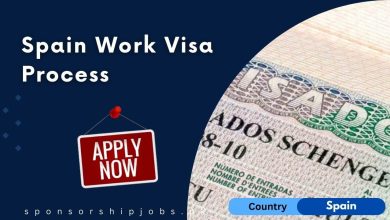Australian Student Visa Requirements 2026 – Subclass 500
Australia remains one of the world’s top destinations for international students seeking high-quality education, cultural diversity, and strong post-study opportunities. Whether you are applying for a short vocational course or a multi-year university degree, understanding the Australian Student Visa (subclass 500) is essential.
This visa allows international students to live, study, and work part-time in Australia while enrolled in a full-time educational program. Below is a comprehensive guide to the Student Visa requirements and application process in 2026, including required documents, how to apply, and what to expect after your visa is granted.
What is the Australian Student Visa (Subclass 500)?
The Subclass 500 Student Visa is issued by the Australian Department of Home Affairs. It allows you to:
- Stay in Australia for the duration of your course (up to 5 years, depending on your program).
- Work up to 48 hours per fortnight (2 weeks) during study periods.
- Bring eligible family members (spouse and children) as dependents.
- Apply for a Post-Study Work Visa after completing an eligible degree.
Check Also: Australia Student Visas Major Updates – Check Here
Eligibility Requirements:
To qualify for an Australian Student Visa, applicants must meet several key requirements. Each part is crucial in demonstrating your genuine intention to study and live in Australia temporarily.
Confirmation of Enrolment (CoE)
- You must have an offer of admission and be enrolled in a full-time course registered on the Commonwealth Register of Institutions and Courses for Overseas Students (CRICOS).
- After paying your tuition deposit, the institution will issue a Confirmation of Enrolment (CoE), which you need to submit with your visa application.
Genuine Temporary Entrant (GTE) Requirement
The GTE requirement demonstrates that you genuinely intend to come to Australia for study and will return home after completing your education. Your written statement should explain:
- Why you chose Australia as your study destination.
- Why you chose your specific course and institution.
- Your career goals after graduation.
- Ties to your home country (such as family, employment, or financial commitments).
- Your previous visa history, if applicable.
The GTE statement is a critical part of visa approval and should be detailed, honest, and personal.
Requirements:
You must show evidence that you have enough funds to cover:
- Tuition fees (for at least one year).
- Living costs (approximately AUD 24,505 per year).
- Travel expenses (return airfare).
- Costs for dependents, if applicable.
Proof of funds can include:
- Bank statements.
- Scholarship confirmation letters.
- Financial support from parents or sponsors.
English Language Proficiency:
Unless exempt, you must meet English language requirements through an approved test, such as:
- IELTS: Overall score of at least 6.0, with no band below 5.5.
- TOEFL iBT: Overall score of at least 60.
- PTE Academic: Overall score of at least 50.
Some exemptions apply if:
- You are from an English-speaking country.
- Your previous studies were in English.
Overseas Student Health Cover (OSHC):
You must purchase OSHC from an approved Australian health insurance provider. OSHC covers medical and hospital expenses while you are in Australia. It must be valid for the entire duration of your stay.
Health and Character Requirements:
You and your family members must:
- Undergo medical examinations if required, depending on your country of origin and intended length of stay.
- Provide police clearance certificates to demonstrate good character.
Australia enforces strict health and background checks for visa applicants.
Application Process:
Once you meet all eligibility criteria, you can begin the visa application process. Follow the steps below for a successful outcome.
Step 1: Obtain a CoE from an Educational Institution
Apply to an Australian university or college. After receiving an offer letter and paying your initial tuition deposit, the institution will issue a Confirmation of Enrolment (CoE).
Step 2: Prepare Your Documents
Collect the necessary documents, including:
- Valid passport (with at least 6 months’ validity).
- Confirmation of Enrolment (CoE).
- Genuine Temporary Entrant (GTE) statement.
- Proof of funds (bank statements, loan letters, scholarship letters, or financial support documents).
- English language test results.
- OSHC policy confirmation.
- Health examination reports, if required.
- Police clearance certificate.
- Academic transcripts and certificates.
Step 3: Apply Online
- Submit your application online through the ImmiAccount portal managed by the Australian Department of Home Affairs.
- Create an account, complete the visa application form, upload your documents, and pay the application fee.
Visa Fee: AUD 710 for the primary applicant, with additional fees for family members.
Step 4: Biometrics and Health Checks
After submitting your application, you may receive requests for:
- Biometric data (fingerprints and photograph).
- Health examinations through approved panel physicians.
Complete these requirements within the specified time to avoid delays.
Step 5: Wait for Visa Decision
Processing times vary, but most applications are decided within 4 to 8 weeks. You can track the status of your application through your ImmiAccount.
Once approved, you will receive a visa grant letter with details about your visa number, conditions, and duration of stay.
After Visa Approval: What Happens Next?
Arrival in Australia
You may enter Australia up to 90 days before your course begins. When arriving at the airport, carry the following:
- Passport
- Visa grant letter
- Confirmation of Enrolment (CoE)
- OSHC policy confirmation
- Academic records
Work Conditions
- You can work up to 48 hours per fortnight during study periods.
- You can work full-time during official semester breaks.
- This helps you gain work experience and support your living expenses.
Bringing Dependents:
- Your spouse and children can accompany you if they are included in your visa application.
- Your spouse can work up to 48 hours per fortnight while you study a bachelor’s degree.
- If you are studying a master’s or doctoral program, your spouse can work full-time.
Maintaining Visa Conditions:
While in Australia on a student visa, you must:
- Remain enrolled in a CRICOS-registered full-time course.
- Maintain satisfactory attendance and academic progress.
- Keep your OSHC valid.
- Inform your institution and the Department of Home Affairs of any changes to your address or contact details.
Failure to comply with visa conditions may lead to visa cancellation.
Pathway After Graduation:
After completing your course, you may be eligible to apply for the Temporary Graduate Visa (subclass 485). This visa allows you to live and work in Australia temporarily and can serve as a pathway toward permanent residency if you meet the necessary requirements.
Conclusion:
Obtaining an Australian Student Visa (subclass 500) requires careful planning and thorough preparation. From enrolling in a registered institution to demonstrating financial capacity and meeting health checks, every step matters. However, once granted, this visa provides access to high-quality education, rich life experiences, and potential long-term opportunities in one of the most student-friendly countries in the world.
For the latest updates and official guidelines, always refer to the Australian Government’s Department of Home Affairs website.
Frequently Asked Questions:
Can I change my course or university after getting a student visa?
Yes, but you must inform the Department of Home Affairs and obtain a new CoE. Changing to a lower-level course may require a new visa.
How long can I stay in Australia on a student visa?
You can stay for the duration of your course plus a short period afterward, usually 1-2 months. Longer courses may permit longer stays.
What happens if my visa is refused?
You will receive a reason for the refusal and may have the right to request a review or appeal, depending on your circumstances.



